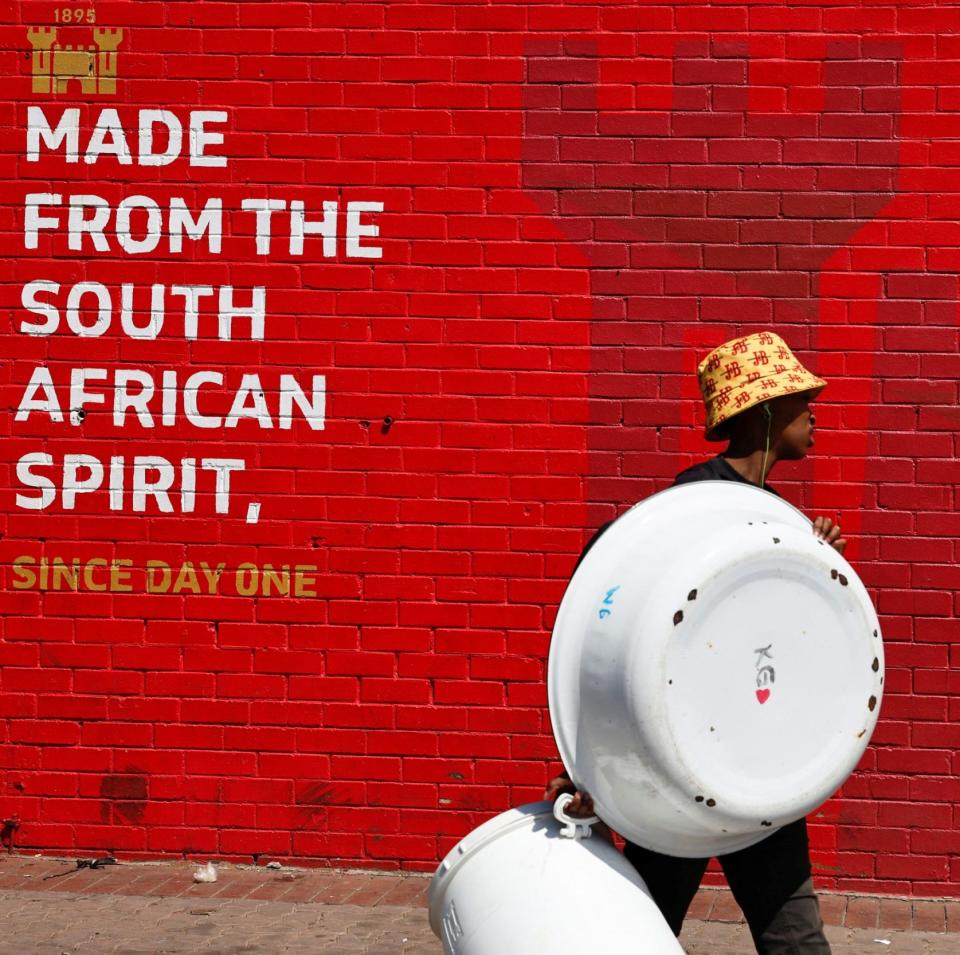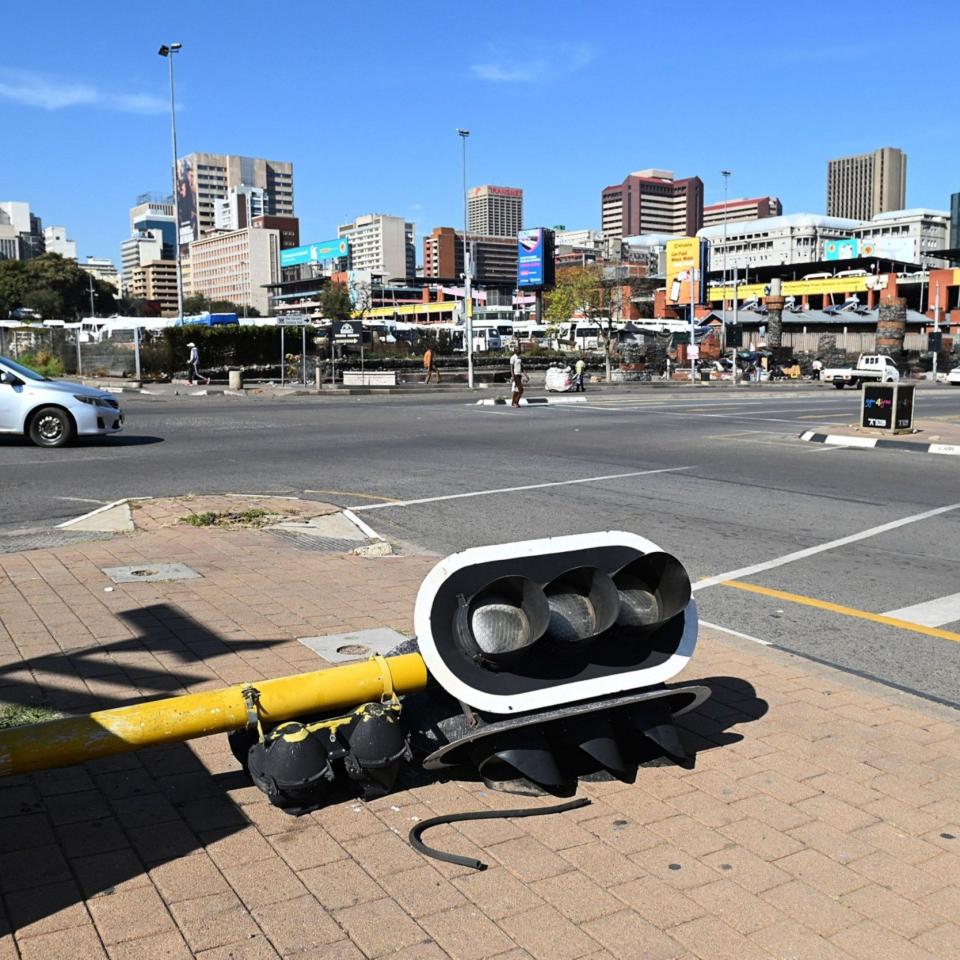From the outside it doesn’t look like Johannesburg is doing well.
Roads littered with potholes. Broken traffic lights have not been repaired for months. Rotting garbage on the street.
But from within, the scale of the problems facing South Africa’s largest city and the continent’s richest and most industrialized city is even worse.
From taps regularly going dry to daily four-hour power cuts – known locally as load shedding – the lives of many people in Johannesburg have taken a dramatic turn for the worse.
The decline of the southern suburb of Forest Hills is a case in point.
Previously dominated by poorer white people, the city has become more mixed in recent decades as black people sought to move from the city’s apartheid-era townships.
“Although they were never rich, at least things always worked [around here],” Stuart Marais, a longtime resident and city councilor, told The Telegraph.
“Traffic lights are regularly destroyed and are not repaired within six to eight months. We have grass growing on our roads that have not been repaired for decades,” he said.


“There are broken cars and many residents put their rubbish on the street and it lies there to rot.”
It was “way too dangerous” to walk around at night, he said. “The decay in this part of Johannesburg is enormous.”
Marais says the blame lies entirely with the municipality, where the African National Congress has the most seats.
He said support for his party, the Democratic Alliance – the main opposition party to the ANC, “has definitely grown in Johannesburg” since the last national election in 2019, something he attributes at least in part to the dire state of the city .
Combined with anger over long-standing corruption, poverty and unemployment, such grievances against the ANC will have a seismic effect on the country’s political landscape when the country goes to the polls again on May 29.
Surveys show the party will lose its majority for the first time since the late Nelson Mandela brought it to power in 1994 after the collapse of apartheid.
If that happens, it will be a big moment for South Africa.
While the ANC would easily still be the largest in parliament, it would be a huge symbolic shift that reflects frustration with a party that is said to have lifted South Africa’s black majority out of poverty.
The misery faced by most of Johannesburg’s nearly six million residents shows just how seriously flawed they are.
The city is the engine of the South African economy, with luxury shopping, world-class sporting arenas, an international airport and world-class hospitals. In 2000 it was described as “a world-class African city”.
Yet the legacy of apartheid is still there.
Legacy of apartheid
Much work has been done to improve Soweto, South Africa’s largest black township, but black areas in the east of Johannesburg in particular remain virtually neglected.
Beyond the townships, there has been an explosion of informal shelters in the center of ‘old’ Johannesburg, where illegal immigrants live in crowded, squalid conditions without running water or official electricity.
Parts of the city have become no-go areas and fatal accidents are common. Last year, a fire broke out in a squatted building, killing at least 77 people.
Even in ordinary middle-class neighborhoods, public spaces are shabby, sidewalks are falling apart, and trees are growing in some drains.
“We are concerned that residents’ anger and frustration will give way to violent protests unless something is done now,” said Neeshan Bolton, chair of the Johannesburg Crisis Alliance.
The Alliance was formed last year to try to solve some of the issues facing the city.
It is made up of locals, including infrastructure experts and entrepreneurs, who say the situation is so desperate that they are offering their services for free.
“Last year we wrote to President Cyril Ramaphosa and told him that residents, workers and businesses were facing potholes, leaking water pipes, overflowing sewers, broken traffic lights and lawlessness,” he said.
“We also told him that daily power outages brought businesses to a standstill for hours, disrupted daily life and forced residents to rely on ingenuity to navigate the chaos. This is still happening now, nothing has changed.”
But Bolton said Africa’s richest city was plagued by “massive” disinvestment that worsened unemployment and made its streets unsafe.


The “dysfunction of the city has its origins in unstable political coalitions within the municipalities and overdue maintenance.”
Mr Ramaphosa has not yet responded to the organisation’s letter, he said, “but we are going ahead and making some difference, at least in some parts of the city.”
The scale of the problems facing Johannesburg has recently been highlighted by the water shortages affecting both the rich and poor parts of the city.
According to reports, at least a quarter of Johannesburg’s stock is lost to leaks every day.
The sprawling city has more than 7,000 miles of underground water pipes, some of which are more than 70 years old, and most are in need of replacement. Only a third of the annual target for pipe replacement is achieved.
Including water theft and a free monthly allowance of 6,000 liters for each household, only about half of the city’s supply is actually paid for.
Ferial Adam, a leading environmental campaigner, said this meant there was a huge shortage of available resources to maintain infrastructure.
“More than half of the budget goes to contractors, and another third to staff, and only a small part to actual maintenance, and some of that is poorly managed.
“We haven’t done enough maintenance over the past 10 years and now so much of it is falling apart.”